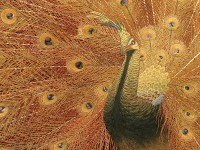Threads of Silk and Gold: Ornamental Textiles from Meiji Japan
(from 9th Nov 2012 until 27th Jan 2013)Discover exquisite embroideries, dyed silk and velvet panels, tapestries, and appliqué works

- This is a visual browsing tool that maps objects in this publication, gallery or collection trail by date of creation onto a timeline.
- The circular markers indicate where objects are on the timeline.
- The size of the markers indicates the relative number of objects at that point on the timeline.
- Hover over a marker to find out which objects are represented at that point in time.
- To expand, collapse or hide the timeline, click these symbols
 found at the top right of the timeline.
found at the top right of the timeline.
- 1850
- 1860
- 1870
- 1880
- 1890
- 1900
- 1910
- 1920
As Japan strove to establish itself as a major international power in the late 1800s, it used its arts to help promote its national image. Designs destined for the foreign market often emphasized the image of Japan as a modern nation with a distinguished history, unspoilt natural beauty and unique cultural characteristics.
Elaborate textiles made to the highest standard and decorated with historical scenes or beautiful landscapes were used to decorate Japanese imperial palaces and embassies. They were also given as diplomatic gifts from the Japanese government and imperial household to foreign monarchs and state dignitaries. In 1897, for instance, Queen Victoria was presented with an embroidered folding screen depicting Arashiyama, a famous beauty spot in Kyoto.
Japan at the World Fairs
Japanese art became so widely known abroad was largely due to the international exhibitions that were such a feature of the late 19th and early 20th centuries. The government of Meiji Japan realised that the World Fairs offered an ideal opportunity to help establish Japan on the international stage, to demonstrate the quality of Japanese products abroad, to learn about the latest Western technology, and to promote exports in order to acquire the foreign currency needed to carry out a programme of modernisation. Involvement in the Fairs became official policy and Japan went on to participate in nearly 40 exhibitions during the Meiji period.
While Japanese industrial products were no match for their post-industrial-revolution Western counterparts, decorative arts such as metalwork, lacquerware, ceramics and textiles were of a relatively high technical standard, and it was these applied arts that made up the majority of the Japanese displays at the exhibitions.
Notice
Objects from past exhibitions may have now returned to our stores or a lender. Click into an individual object record to confirm whether or not an object is currently on display. Our object location data is usually updated on a monthly basis, so please contact the Jameel Study Centre if you are planning to visit the museum to see a particular Eastern Art object.
© 2013 University of Oxford - Ashmolean Museum

